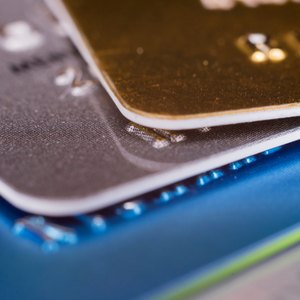
Without a carbon-copy check trail to refresh your memory, it can be easy to lose track of your purchases, as well as the money left in your checking account or on your prepaid debit card. However, the technology that has almost replaced paper checks has also brought with it the convenience of quick and easy balance inquiries. So while the balance might not be what you had hoped, it doesn't have to take you by surprise.
Check Your Balance Online or Over the Phone
It is a good idea to review the account associated with your debit card on a regular basis. You can obtain this information via the phone or Internet. For example, you can call your bank's customer service number and follow the prompts to hear your balance and recent transactions, or contact your local branch's teller and request the current balance. You can also use the bank's online portal by first registering for an account and then signing in and viewing the transactions that have processed to your account.
Check the Figures
Pay attention to any discrepancies to the balance or recent transactions, as the information you see may not be real-time or completely accurate. If you know a transaction is missing, you may need to manually account for the dollar amount and subtract it from the balance on your own. While transactions typically process within 24 hours, there are exceptions. It helps to keep your receipts until you see the transaction has processed correctly.
Take Advantage of Mobile Banking
Download an online banking app to your cell phone or tablet. The features of such an app allow you to conveniently track your balance all the time. Take advantage of the mobile apps features, like setting up an alert that lets you know when your balance is getting low.
Keep Accurate Records Manually
Track how much money you have in your account and record your debit card transactions manually -- just like you record checks. Record the date, the amount, and where you made purchases from the receipts. Include ATM withdrawals and any other transactions on your account, such as bank fees or paper checks that affect the balance available on your debit card.
Review Your Monthly Account Statement
Check the monthly account statement you receive by mail or email if you opted to go paperless. Verify that the balance and transactions reflected on the statement match what you have in your records. Report any discrepancies to your bank or the debit card issuer.
References
- Washington State Department of Financial Institutions: Debit Card Frequently Asked Questions
- The Mint: Track Your Checking Account
- KeyBank: How to Balance Your Checking Account
- Bank of America: Understanding What They Are and When to Use Them
- Consumer Finance: How Do I Check My Prepaid Debit Card Balance?
- Balance Track: Chapter 3 – Withdrawals
Writer Bio
Sara Mahuron specializes in adult/higher education, parenting, budget travel and personal finance. She earned an M.S. in adult/organizational learning and leadership, as well as an Ed.S. in educational leadership, both from the University of Idaho. Mahuron also holds a B.S. in psychology and a B.A. in international studies-business and economics.

